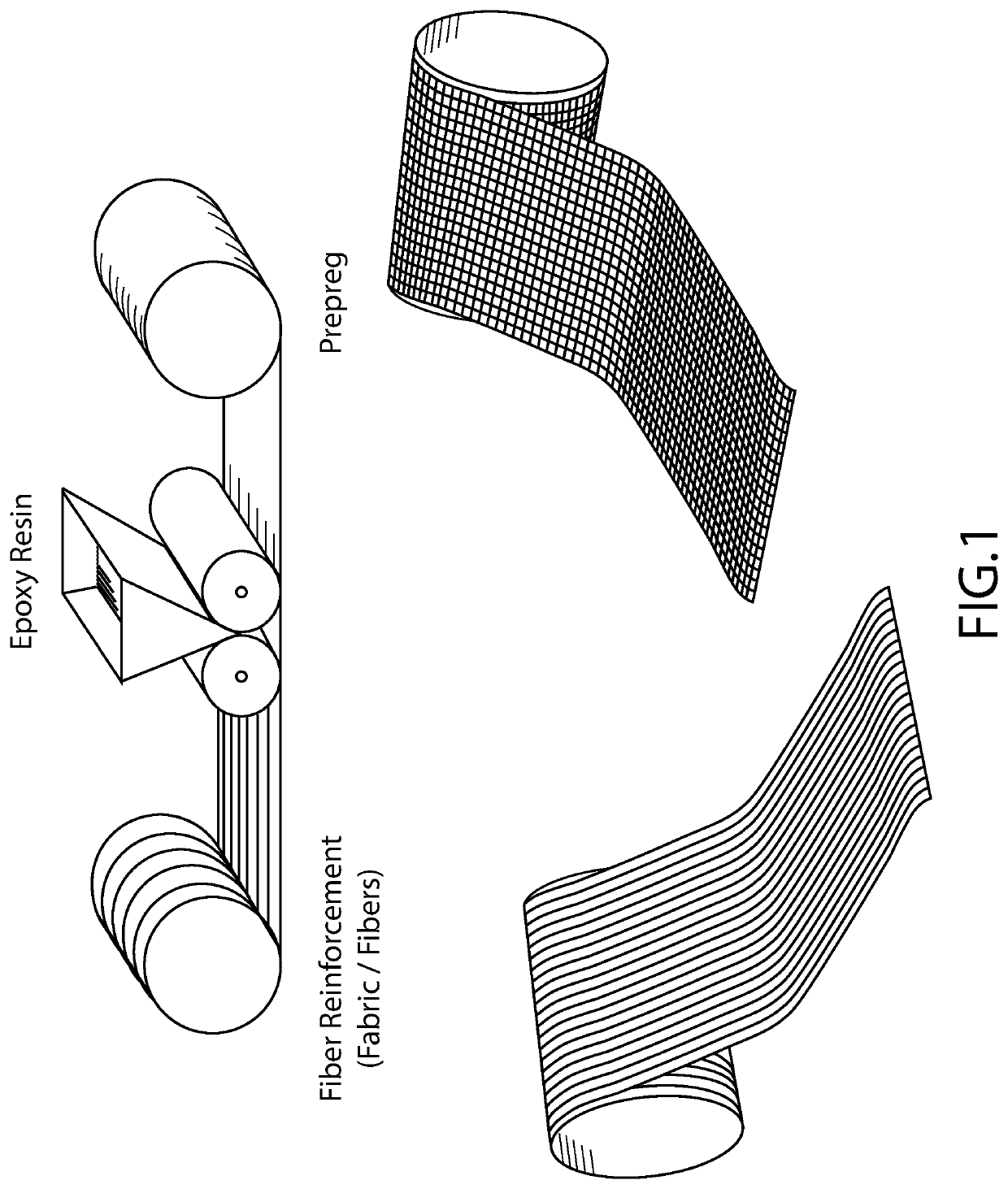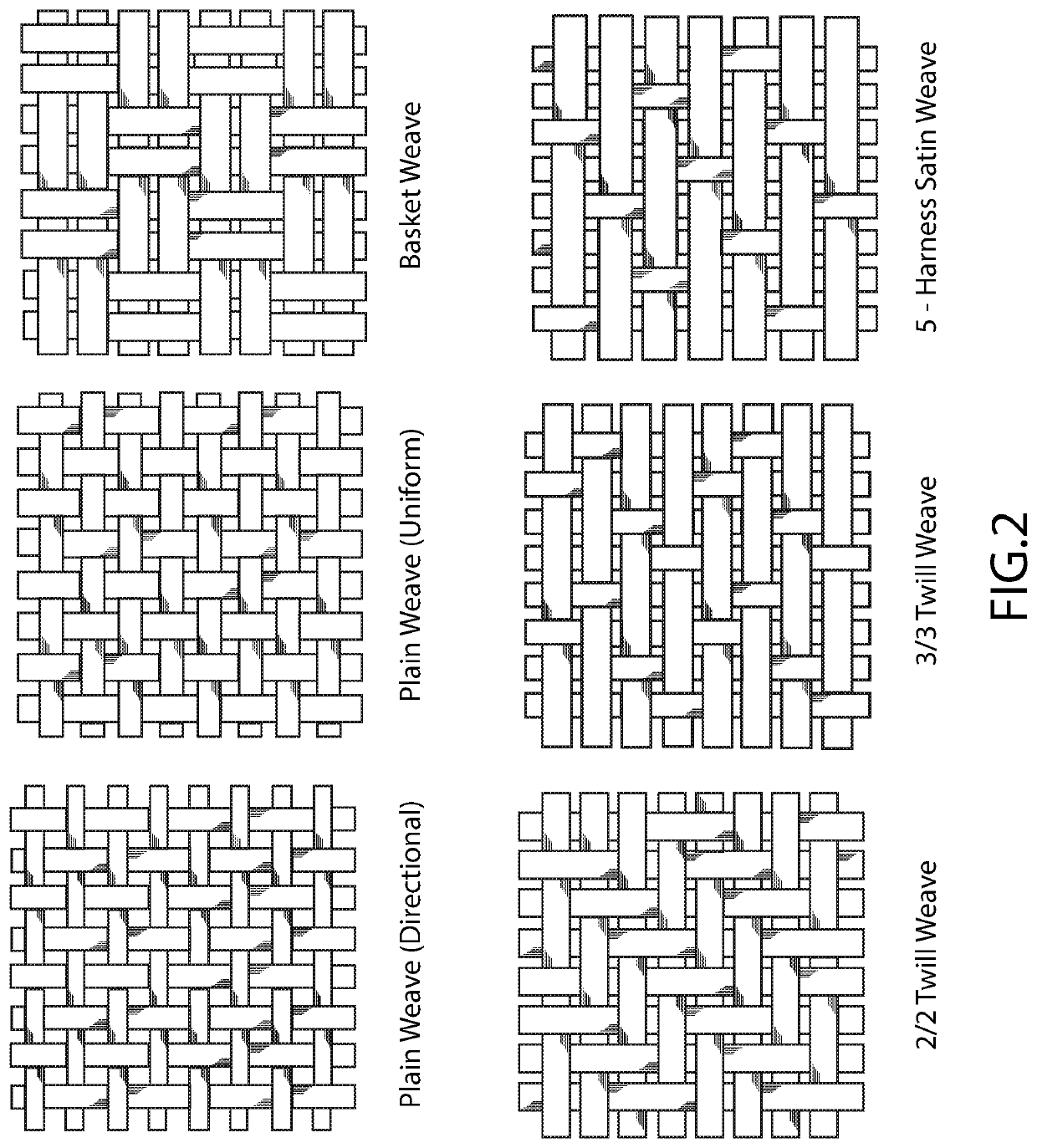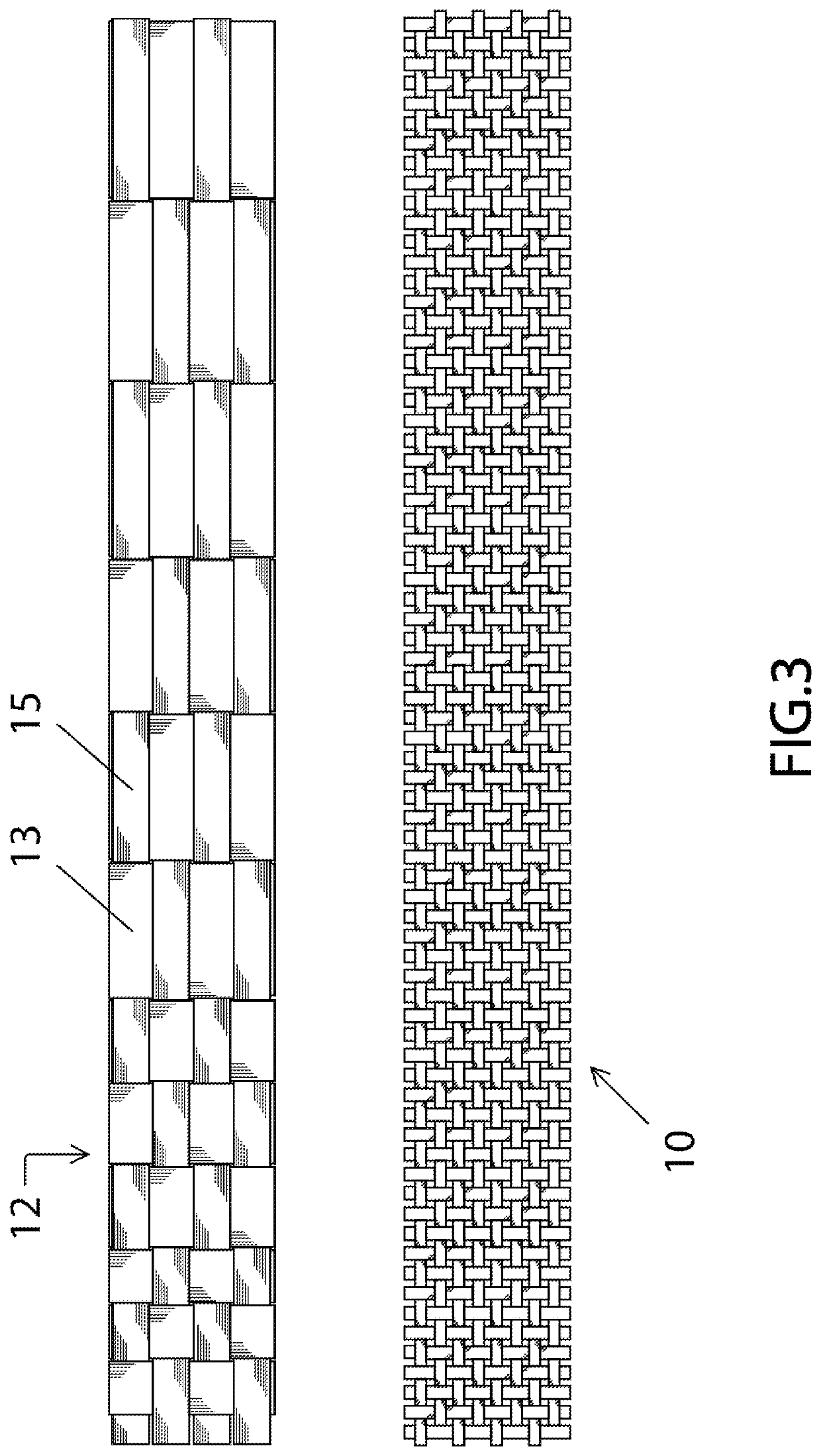Methods of asymmetrically weaving raw fiber materials to create fiber reinforced products and products created thereby
a technology of raw fiber and asymmetric weaving, which is applied in the field of asymmetric weaving raw fiber to create fiber reinforced products and products, can solve the problem of reducing the potential for asymmetric weaving
- Summary
- Abstract
- Description
- Claims
- Application Information
AI Technical Summary
Benefits of technology
Problems solved by technology
Method used
Image
Examples
Embodiment Construction
[0057]With reference to FIG. 3, a composite weave is generally designated by the reference numeral 10 and is a manner by which such repeating pattern weaves are created in the prior art. Noteworthy is the uniformity of the weave from one end to the other. By contrast, in the same FIG. 3, the weave 12 is made up of plural rectangular woven pieces with one material or fiber angle designated by the reference numeral 13 and another material or fiber angle designated by the reference numeral 15. These materials consist of weaves such as those shown in FIGS. 1 and 2. As shown in the top image of FIG. 3, the shapes of the various woven pieces that are attached together are varied. As the pieces are lengthened in the direction of elongation of the entire piece, stiffness is reduced. Thus, in the left hand side of the top image in FIG. 3, the small square pieces introduce greater stiffness than the much longer pieces at the right side of the view. As shown in that view, as one looks from lef...
PUM
| Property | Measurement | Unit |
|---|---|---|
| length | aaaaa | aaaaa |
| angle | aaaaa | aaaaa |
| flexibility | aaaaa | aaaaa |
Abstract
Description
Claims
Application Information
 Login to View More
Login to View More - R&D
- Intellectual Property
- Life Sciences
- Materials
- Tech Scout
- Unparalleled Data Quality
- Higher Quality Content
- 60% Fewer Hallucinations
Browse by: Latest US Patents, China's latest patents, Technical Efficacy Thesaurus, Application Domain, Technology Topic, Popular Technical Reports.
© 2025 PatSnap. All rights reserved.Legal|Privacy policy|Modern Slavery Act Transparency Statement|Sitemap|About US| Contact US: help@patsnap.com



